Who invented the quartz watch movement, and when was the quartz watch created? How does a quartz watch work, and what are the best quartz operated watches currently available? Here are some of the questions we’ll answer in this series dedicated to uncovering the history of quartz watchmaking; from the beginning of the race to high-precision time measurement down to the reveal of the first quartz watch and beyond. Quartz technology and quartz clocks appeared decades before the first quartz wristwatch came in 1969; the latter is the endpoint of a long-term process geared towards incessantly improving a watch’s accuracy, started towards the end of 1950. Back then, the aim was to improve a mechanical watch’s accuracy by increasing its frequency to ten beats per second. Towards the end of the 1950s, the market was flooded with watches running at eight beats per second.
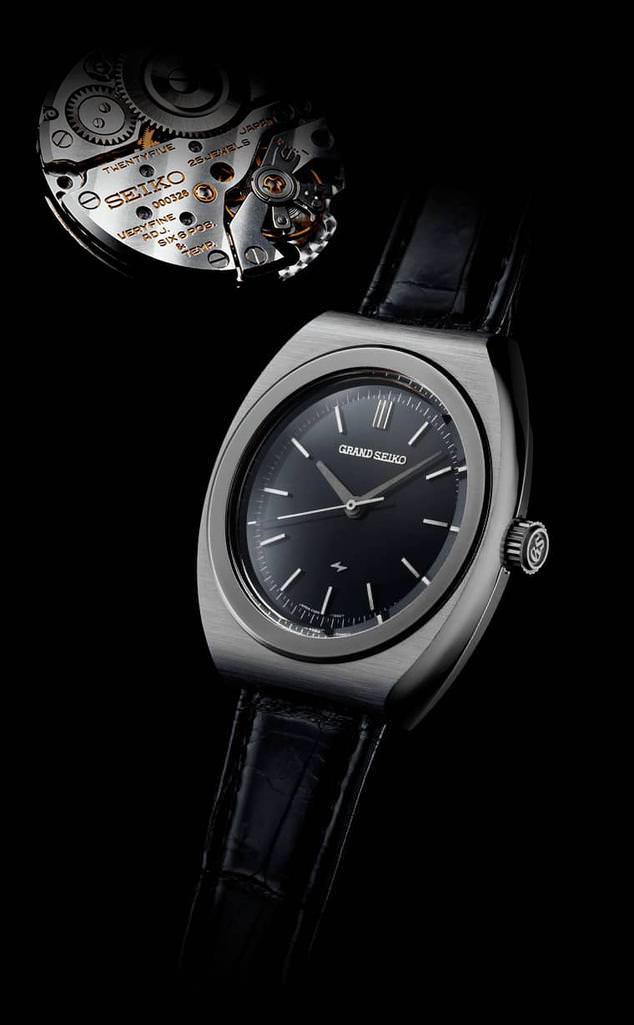 The first mechanical 5 Hertz wristwatch debuted in 1966. Girard–Perregaux won the race to market the first-ever ten beats per second mechanical timepiece. A year later, Seiko introduced the Seiko Lord Marvel, and its luxury sibling, Grand Seiko, introduced the venerable Grand Seiko V.F.A. in 1969. These achievements prove how competitive Seiko was as a group; their high-precision offering was stunning, as confirmed by the awards during the fiercest competitions held at the Geneva or Neuchâtel observatories, respectively.
The first mechanical 5 Hertz wristwatch debuted in 1966. Girard–Perregaux won the race to market the first-ever ten beats per second mechanical timepiece. A year later, Seiko introduced the Seiko Lord Marvel, and its luxury sibling, Grand Seiko, introduced the venerable Grand Seiko V.F.A. in 1969. These achievements prove how competitive Seiko was as a group; their high-precision offering was stunning, as confirmed by the awards during the fiercest competitions held at the Geneva or Neuchâtel observatories, respectively.
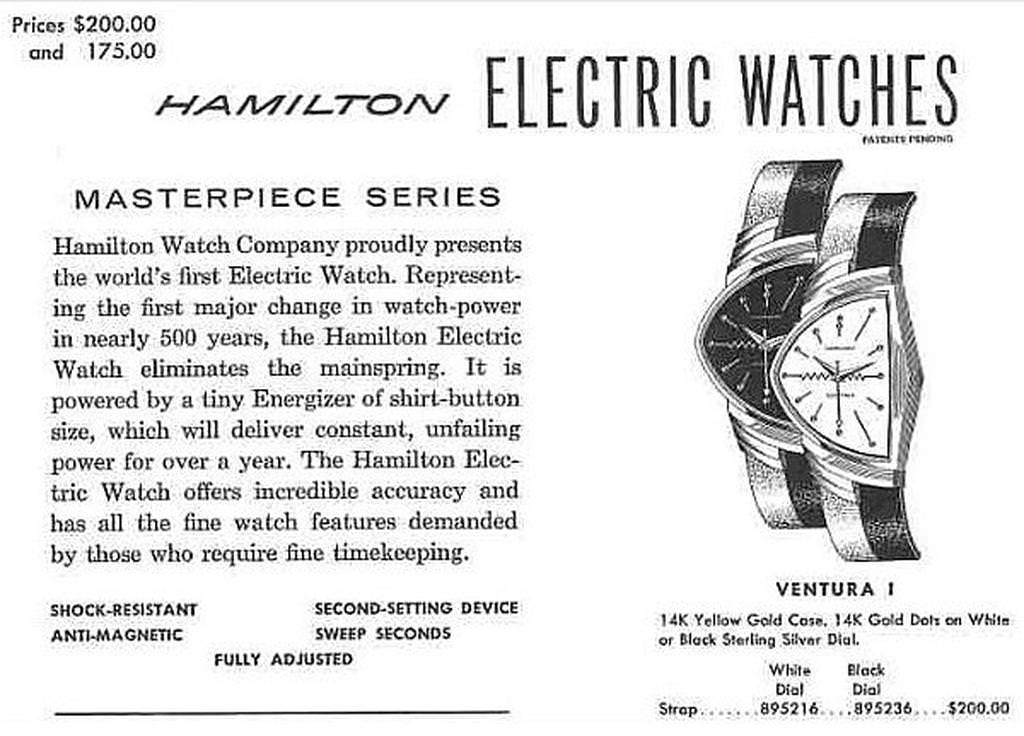 Back then, wristwatches were, first and foremost, tool watches, and their accuracy was an essential requirement during the unstoppable age of industrial development, both in Europe and overseas. The competition had just begun; also, the development of digital technologies was coming. In 1957 Hamilton debuted the Hamilton Electric Watch, whose gear train was powered by a battery, and in 1960 Bulova introduced the never-forgotten Accutron. Today’s Accutron is a new brand with the same forward-looking approach, whose Spaceview Limited Edition 2020‘s electrostatic technology has replaced the tuning fork one.
Back then, wristwatches were, first and foremost, tool watches, and their accuracy was an essential requirement during the unstoppable age of industrial development, both in Europe and overseas. The competition had just begun; also, the development of digital technologies was coming. In 1957 Hamilton debuted the Hamilton Electric Watch, whose gear train was powered by a battery, and in 1960 Bulova introduced the never-forgotten Accutron. Today’s Accutron is a new brand with the same forward-looking approach, whose Spaceview Limited Edition 2020‘s electrostatic technology has replaced the tuning fork one.
Who invented the quartz watch?
The first watch operated by a quartz movement was invented in 1927 by Canadian engineer Warren Marrison. Ten years later, Issac Koga, a Japanese scientist and inventor created the first-ever Japanese quartz watch. Using a quartz crystal’s property of oscillating at a precise frequency when a voltage is applied to it, the quartz technology significantly improved the watches’ accuracy. Those mentioned above were the dawn of the quartz era; the technology was far from being adopted in a wristwatch. Seiko‘s managers were the first ones to envision a promising commercial opportunity, and the company began working relentlessly on reducing the size of a quartz clock’s movement and design a quartz watch mechanism to be housed in a wristwatch.
The development of the quartz movement, the central role of Seiko
In 1958 Seiko developed a quartz clock about the size of a large locker. It was built specifically for a broadcast station. They next released a table clock to be used during the 1964 Olympics in Tokyo.
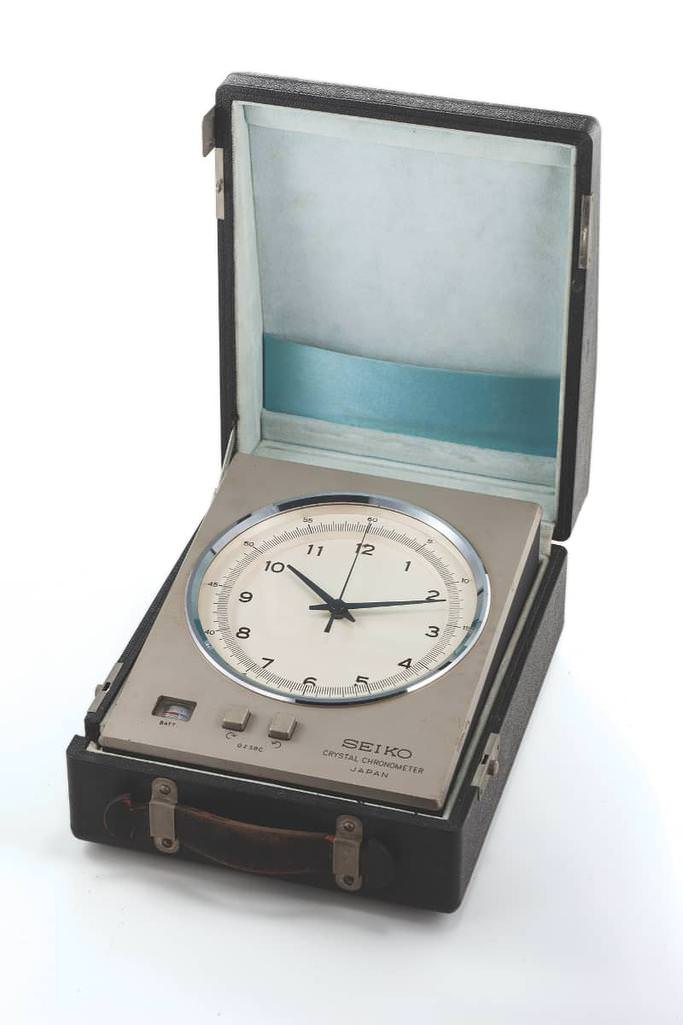 Seiko debuted a quartz table clock in 1962, the well-known Seiko Quartz Crystal Chronometer pictured above (photo: Antiquorum). After the Olympics, the Japanese brand accelerated the quartz movement’s miniaturization, unveiling a pocket watch and a wristwatch prototype in 1966 and 1967.
Seiko debuted a quartz table clock in 1962, the well-known Seiko Quartz Crystal Chronometer pictured above (photo: Antiquorum). After the Olympics, the Japanese brand accelerated the quartz movement’s miniaturization, unveiling a pocket watch and a wristwatch prototype in 1966 and 1967.
1969: Seiko introduces the Quartz Astron 35 S.Q., the first quartz wristwatch in history
On December 25, 1969, Seiko introduced the Quartz Astron 35SQ model (source below: By Deutsches-uhrenmuseum – Own work, CC BY-SA 4.0, https://commons.wikimedia.org/w/index.php?curid= 49275392), the first-ever quartz wristwatch in history. Unlike Bulova, which had not extended the use of its technology to partners or competitors, Seiko understood that to ensure extensive commercial success, it should have supplied the quartz wristwatch technology to as many brands as possible.
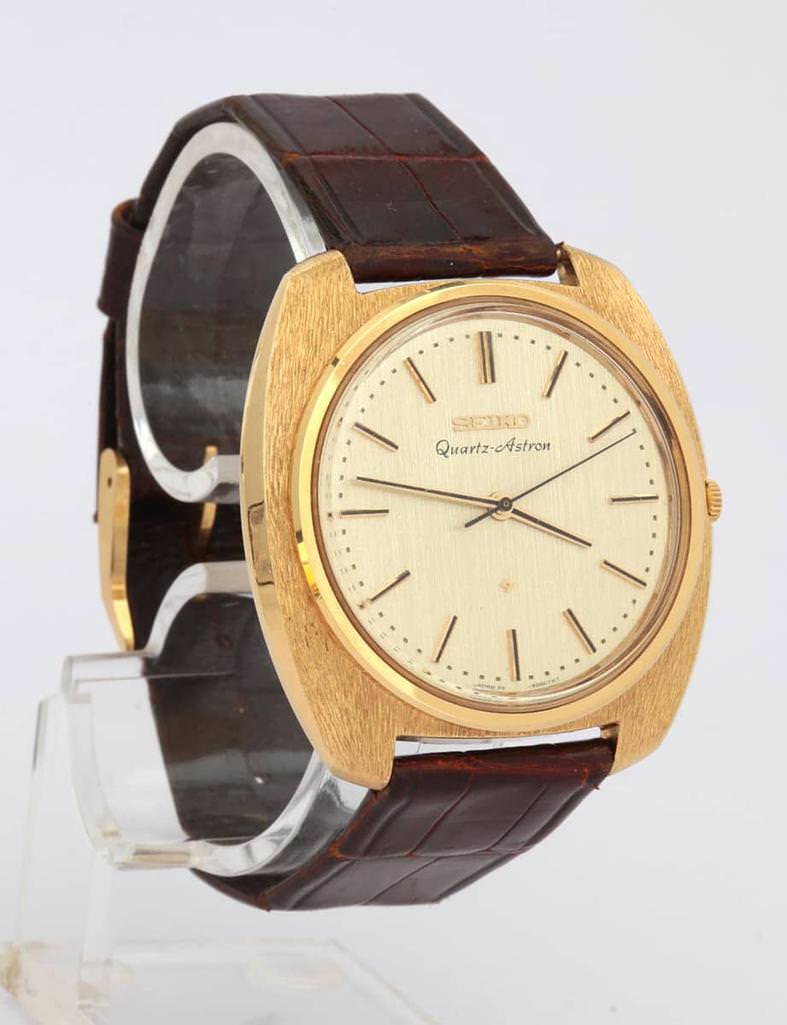 The retail price of the original Seiko Quartz Astron was 450,000 Yen. Astron ensured a + or – 0.2 seconds per day, and a + or – 5 seconds per month, accuracy. Consider a mechanical watch’s accuracy was about seconds per day. Initially equipped with a quartz oscillator operating at a frequency of 8192 Hertz, following watches reached a 32.768 Hz operating frequency, which became the reference standard. Seiko introduced an industry-standard that shocked the watchmaking community, including Switzerland, where most brands, to survive, rapidly converted their business to quartz technology.
The retail price of the original Seiko Quartz Astron was 450,000 Yen. Astron ensured a + or – 0.2 seconds per day, and a + or – 5 seconds per month, accuracy. Consider a mechanical watch’s accuracy was about seconds per day. Initially equipped with a quartz oscillator operating at a frequency of 8192 Hertz, following watches reached a 32.768 Hz operating frequency, which became the reference standard. Seiko introduced an industry-standard that shocked the watchmaking community, including Switzerland, where most brands, to survive, rapidly converted their business to quartz technology.
(Source: Seiko. Photo credit: courtesy of Seiko Watches)
Gaetano C @Horbiter®
Instagram – Gaetano Cimmino
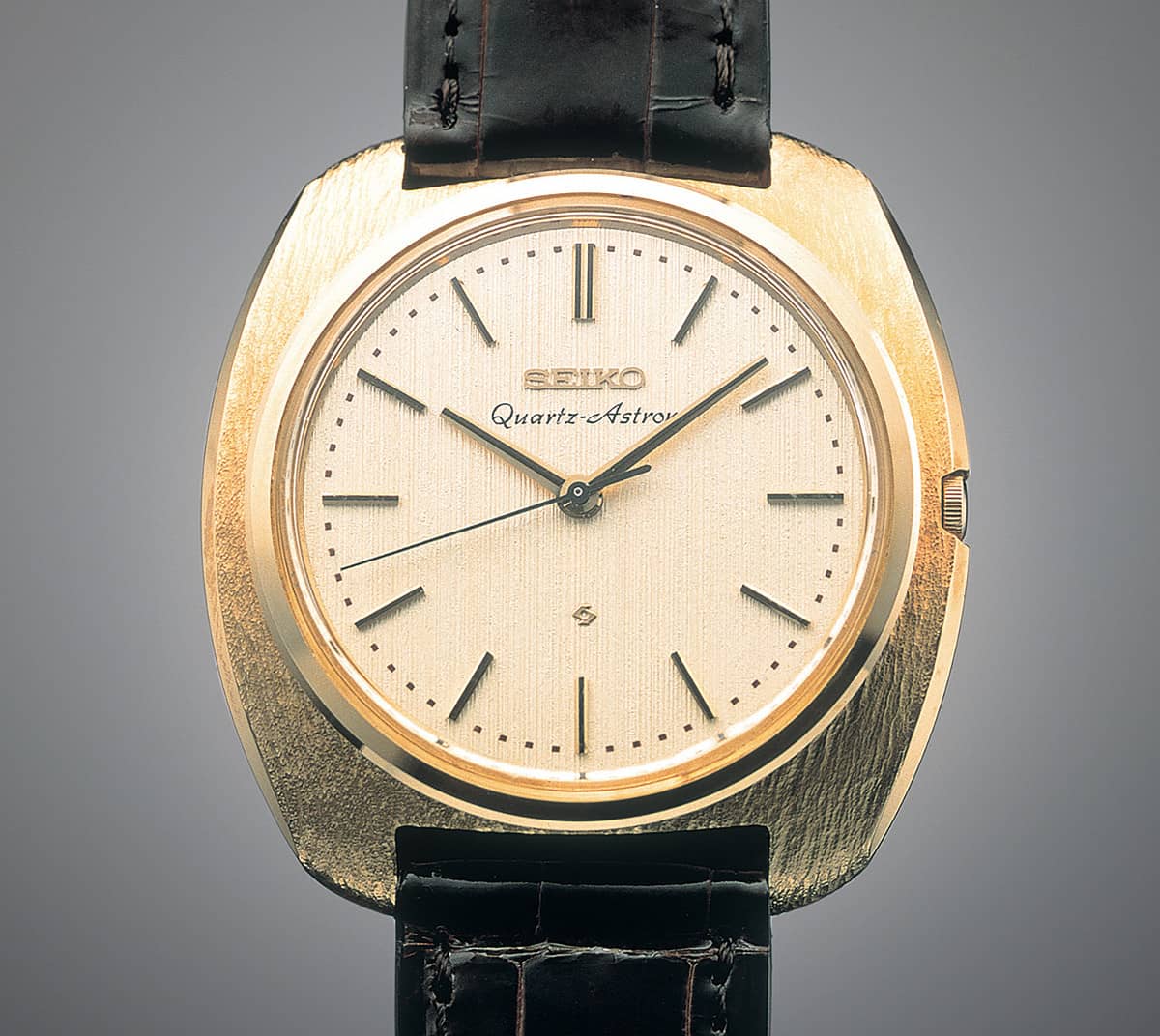

Warren Marrison was Canadian..
Coinvented quartz clock